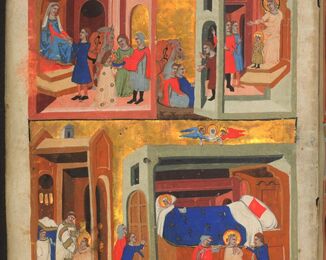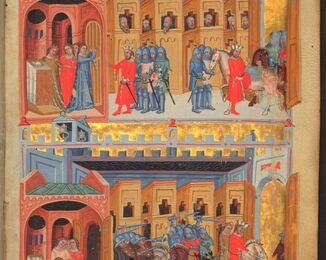Although the Chronicle of Dalimil is best known as the first chronicle written in Czech, the fragment on display here comes from its Latin translation.
The Paris Fragment of the Chronicle of Dalimil
NL Prague, shelfmark XII.E.17
Although the Chronicle of Dalimil is best known as the first chronicle written in Czech, the fragment on display here comes from its Latin translation. Featured as the Exhibit of the Month, this folio from the so-called Paris Fragment is presented as part of the exhibition marking the 900th anniversary of the death of the chronicler Cosmas. Written in the early 14th century, the Chronicle of Dalimil was the first historical work composed in Czech verse and the earliest known attempt—following nearly two centuries after Cosmas—to provide a comprehensive narrative of Bohemian history, including its legendary beginnings.
The identity of Dalimil’s author remains unknown; however, the text reveals a figure of exceptional learning, well-versed in the political realities of his time and deeply attuned to the ideals and concerns of the Czech nobility, whose pivotal role in national history he consistently emphasises. Notably, the chronicle expresses strong anti-German sentiment and a distinctively Czech nationalist perspective. Far from merely continuing Cosmas’s Latin chronicle, Dalimil’s work represents an entirely new historical vision.
Before the discovery and acquisition of this richly illuminated fragment in Paris in 2005—of which an artistic reproduction is exhibited here—only a contemporary German translation of Dalimil’s Czech verse was known. The fragment’s Latin version was therefore entirely unexpected, as the original text was clearly intended for social groups such as the nobility and urban elites, who typically had no command of Latin. Codicological and art-historical analyses of this relatively modest manuscript have led to the persuasive theory that it was commissioned as a gift for the young Charles IV, most likely during his campaign in Italy in the early 1330s.
The digital copy of the manuscript is available here >>



